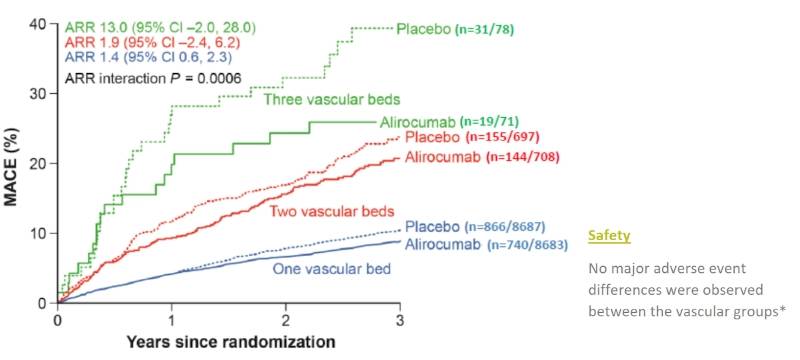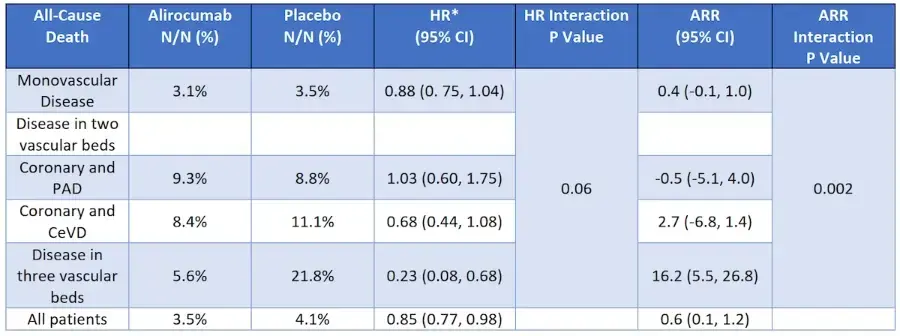{
event: "article_read",
name: `Odyssey outcomes - PVD results`,
author: ``,
tags: `Cardiovascular | Dyslipidemia`,
publication_date: ``,
interaction_type: "content"
}
Odyssey outcomes - PVD results
Odyssey Outcomes: Addition of PCSK9i to Background Statin Therapy Further Reduces MACE.
Polyvascular Disease Sub-analysis Overview
Alirocumab in Patients with Polyvascular Disease and Recent Acute Coronary Syndrome
Objective
In this prespecified analysis of the Odyssey Outcomes trial, we investigate the influence of polyvascular disease (PVD) on:
- Risks of MACE and death in patients with recent ACS and dyslipidemia despite intensive statin therapy
- The modification of risk by alirocumab
For the heterogeneity of alirocumab treatment effed by polyvascular disease category, Cox models were used for interaction terms for relative risk reduction and Gail-Simon tests for AR
CeVD, cerebrovascular disease; PAD, peripheral artery disease
Primary MACE: One, two or three vascular beds
RRR interaction p=0.40. *In overall population, there were no differences in the incidence of adverse events or laboratory abnormalities between alirocumab and placebo groups, except for local injection-site reactions
Death: One, two or three vascular beds
HRs and p-values reflect stratification by geographic region
Polyvascular disease sub-analysis conclusions
- Increasing risk of death in patients with affected vascular beds remain a challenge for clinicians
- This study demonstrates that PVD is associated with high risk of death, and yet with alirocumab, the corresponding ARR for incidence of death was 0.4% (P-interaction = 0.002)
- Alirocumab, when added to high-intensity statin therapy, was associated with a reduction in mortality in this group of patients
- Jukema JW, et al. JACC. 2019; 74(9):1167-76.
Related articles
MAT-BH-2100551/v2/Jun 2023


.jpg/jcr:content/Figure%201%20(2).jpg)
.jpg)
.webp)

.webp/jcr:content/ROSETTE%20summary%20(1).webp)
.webp/jcr:content/The%20explorer%20study%20(1).webp)